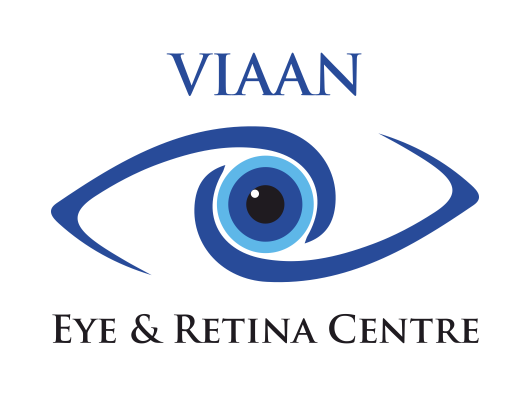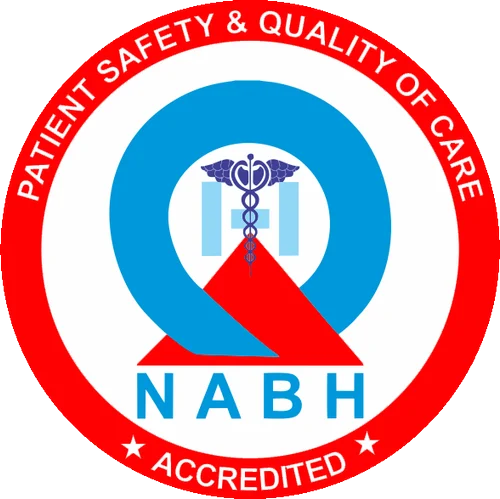In the kaleidoscope of life, our eyes paint the vibrant world around us. But what if the colors start fading and the lines blur as if a fog has rolled in, robbing us of our visual splendor? Well, this is the struggle of millions of old age people battling against age-related macular degeneration – a stealthy vision thief that targets the center of your sight!
Age-related macular degeneration (AMD) is a vision disorder that affects the central part of your sight, called the macula. Think of the macula as the camera’s autofocus, ensuring sharp detail and crispness. However, as you age, this vital part of the eye can start to dysfunction, causing faces to blur, words to dance, and colors to dim.
The retina specialist at Viaan Eye and Retina Centre brings this blog to help you know all about AMD – its causes, types, and possible ways to slow down its growth.
What Is Age-Related Macular Degeneration?
AMD is a common eye condition that typically affects people over the age of 50. It damages a small part of your eye called the macula, which is responsible for giving you clear central vision. This means that you might not lose your complete vision, but you might find it difficult to see fine details, like reading small print or recognizing faces. And, over time, it may also impact your ability to do everyday tasks, like driving, reading, or even watching TV!
Though there is no cure for AMD, early detection through regular eye checkups by your retina specialist can help you manage the condition and prevent further loss of vision.
Now, let us understand the types of AMD –
What Are The Types Of Age-Related Macular Degeneration?
AMD is found in two different types –
- Dry Age-Related Macular Degeneration
Dry AMD, also known as Atrophic AMD, is the more common type, affecting around 90% of people. It happens when small, yellow protein deposits named Drusen build up beneath the macula and cause it to become thinner and drier.
Under this condition, the loss of vision takes place slowly, and most people don’t completely lose their central vision. However, there are chances that the dry form may turn into the wet form of AMD, which is a more severe type.
- Wet Age-Related Macular Degeneration
Wet AMD, also called the Exudative type, happens when unusual blood vessels grow beneath your retina and macula. These blood vessels can leak blood and fluids which may result in a buildup. This buildup of fluids may result in a bump that forms in your macula, leading to the appearance of dark spots in the center of your vision.
Roughly 10% of people with AMD experience this form, but the sad part is that it has the potential to quickly result in the complete loss of central vision.
What Are The Stages Of Age-Related Macular Degeneration?
Dry AMD progresses through three stages. Signs of loss of vision are often visible only in the later stage, but your retina specialist may identify indications during checkups.
- In the initial stage, macular alterations arise without affecting vision.
- During the intermediate stage, you might experience blurriness or waviness in your vision.
- In the advanced stage, your central vision may diminish entirely, causing substantial visual impairment.
Wet AMD is already in an advanced stage of this condition.
Now, let’s find out how does this eye condition happen –
What Causes Age-Related Macular Degeneration?
AMD runs in families, but it can also happen to anyone without a family history! The exact cause of the disease is not fully understood; however, there are several factors that contribute to its development. One key factor is age – the risk of AMD increases as you get older.
Other reasons why AMD occurs are –
- Unhealthy Food
- Smoking
- Overexposure to sunlight and blue light from digital screens
What Are The Symptoms Of Age-Related Macular Degeneration?
Initially, you might not notice any change. However, with the passage of time, you might come across the following signs and symptoms –
- Having trouble seeing in the dark
- Objects appearing blurry
- Changing colors
- Difficulty in seeing things clearly
- Straight lines appear wavy
- Appearance of empty or dark spots in your vision
How Can Age-Related Macular Degeneration Be Treated?
There isn’t a way to completely fix AMD, but if you consult your retina specialist early and start the treatment, you can slow down its growth.
There are different treatment options depending on the kind of AMD you are suffering from –
- For dry AMD, the retina specialist will advise you to take the following vitamins and minerals to help slow it down –
- Vitamin C
- Vitamin E
- Lutein
- Zinc
- Copper
- Zeaxanthin
- For wet AMD, your retina specialist will provide you with medications that will surely help but not completely cure it. They are injected to stop a protein called VEGF from making new blood vessels that cause the problem.
To know which treatment option will be the best shot for you, book an appointment with the best retina specialist at Viaan Eye and Retina Centre. We will help you navigate your journey with comfort and ease!



